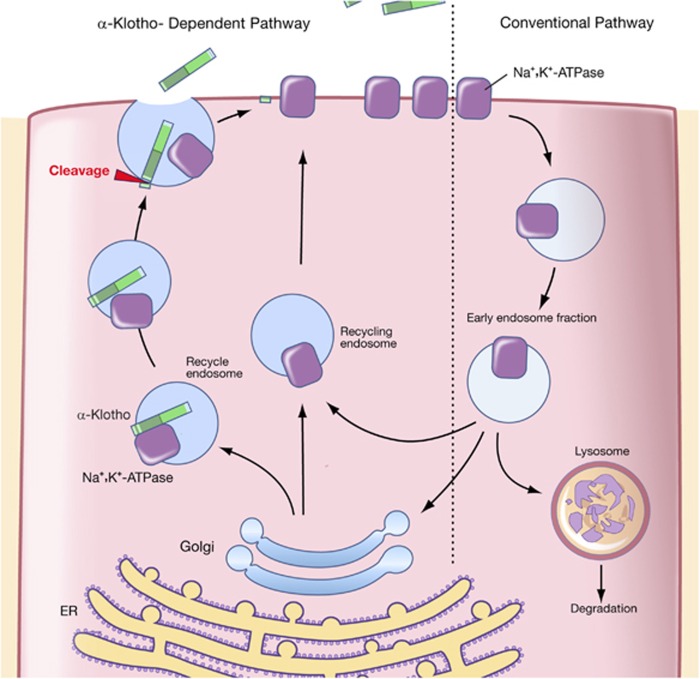Figure 3.
The bone–kidney–parathyroid axes. Negative feedback loops in the regulation of calcium metabolism. Increased levels of 1,25 (OH)2D3—the active form of vitamin D—bind to the vitamin D receptor (VDR) in osteocytes, which, in turn, forms a heterodimer with the nuclear receptor RXR. The complex afterwards directly binds to the promoter area of FGF23 gene and activates its expression. Secretion of FGF23 protein from bone suppresses further synthesis of vitamin D by either binding to the Klotho–FGFR complex in the parathyroids (bone–parathyroid axis) or by binding to the same complex in kidneys (bone–kidney axis). In the parathyroid gland, FGF23 suppresses PTH expression, which, in turn, suppresses the expression of Cyp27b1 gene that encodes 1a-hydroxylase, the rate-limiting enzyme in 1,25 (OH)2D3 synthesis. In the kidney–bone axis, FGF23 directly suppresses Cyp27b1 gene expression. Alpha-Klotho is required to convert the canonical FGF receptor-1c (FgfR1c) to a receptor specific for FGF23. FGF, fibroblast growth factor.

